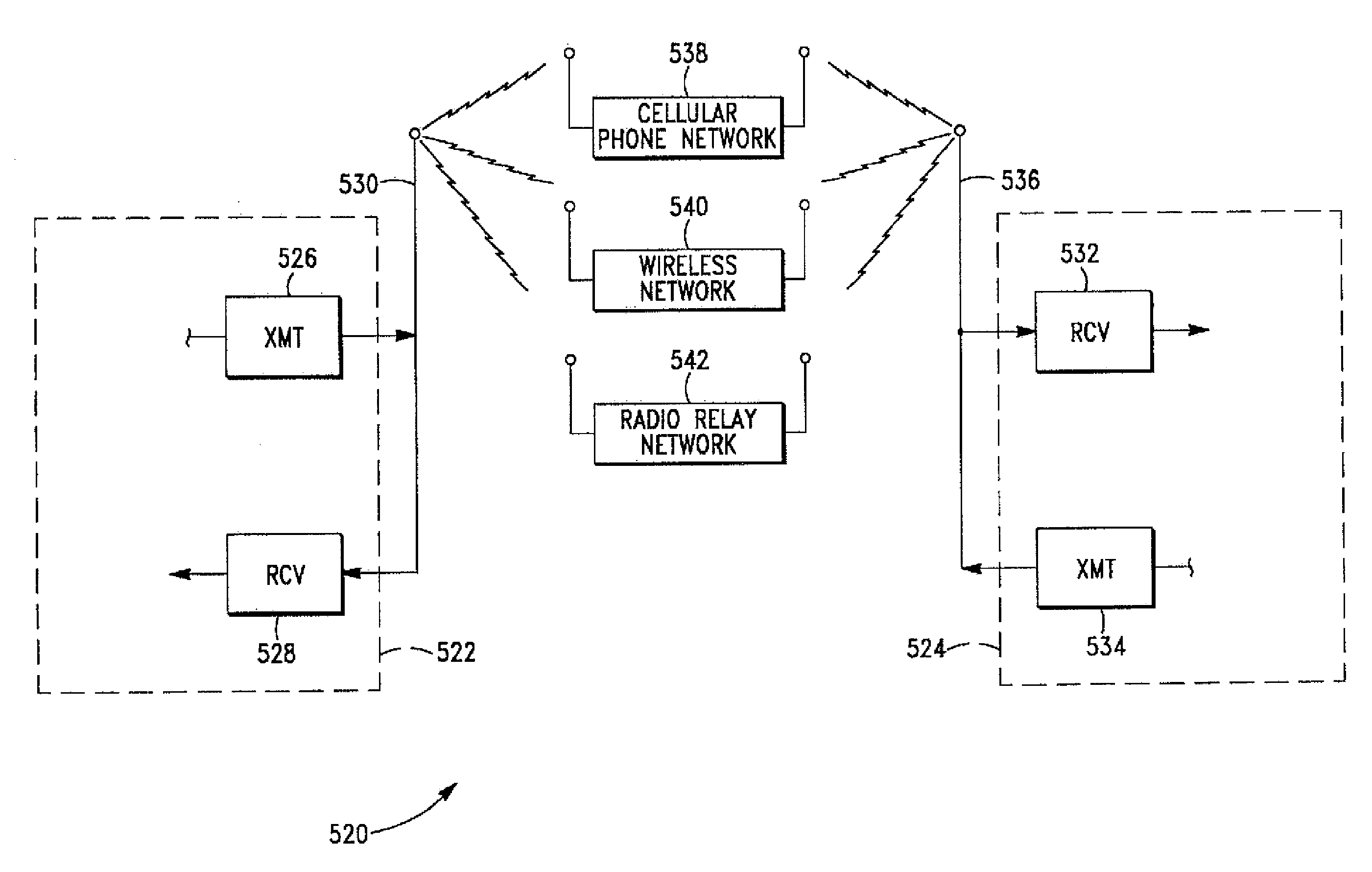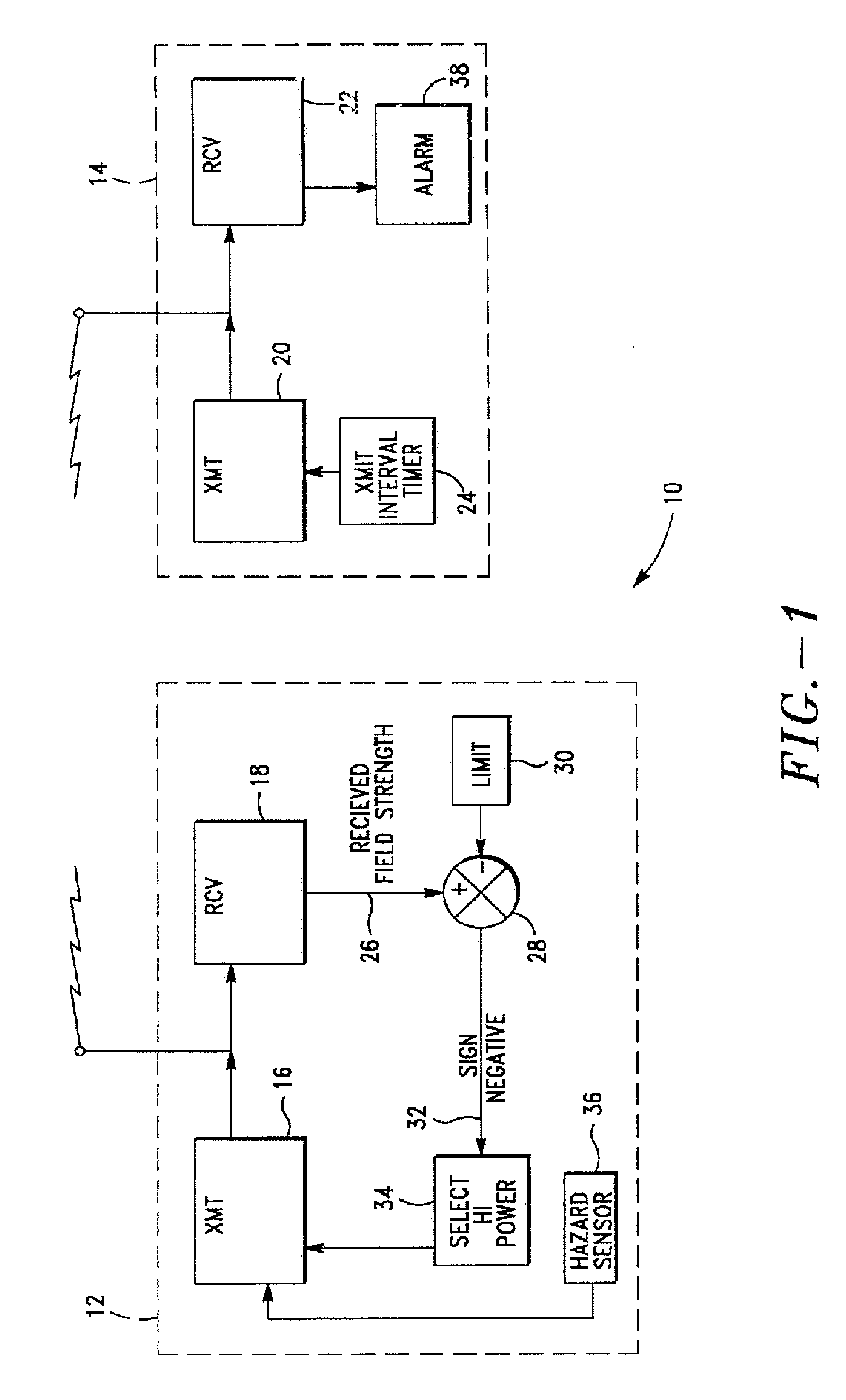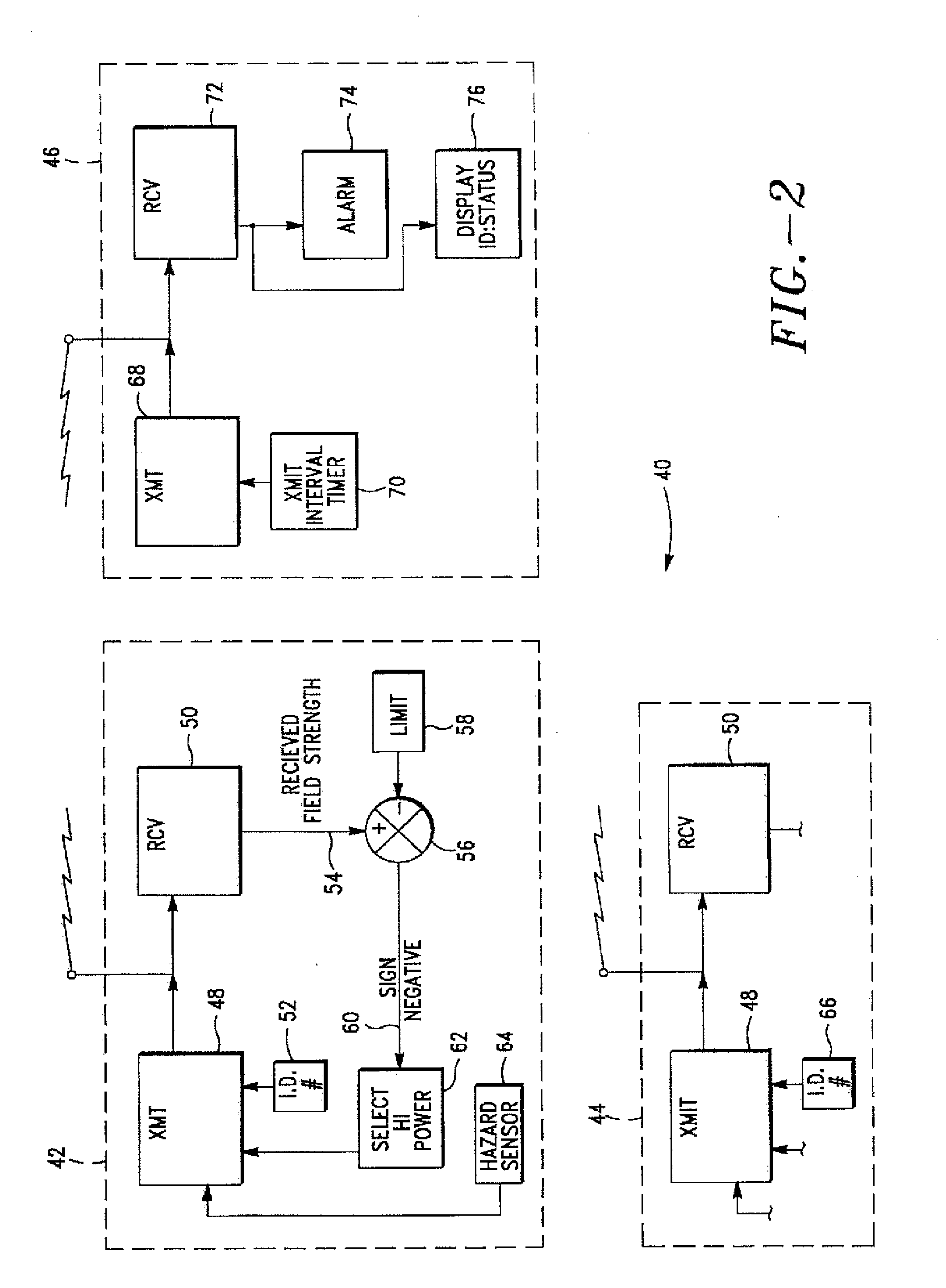Multi-hazard alarm system using selectable power-level transmission and localization
a multi-hazard, power-level technology, applied in the field of personal alarm systems, can solve the problems of limited battery space, battery's useful life is still, and the remote unit of most child monitoring systems is typically quite small, so as to prolong the battery life of the remote unit, the effect of rapid and precise positioning of the remote uni
- Summary
- Abstract
- Description
- Claims
- Application Information
AI Technical Summary
Benefits of technology
Problems solved by technology
Method used
Image
Examples
Embodiment Construction
[0090]With reference to FIG. 1, there is shown a block diagram of a personal alarm system according to one embodiment of the present invention and depicted generally by the numeral 10. The personal alarm system 10 includes a remote unit 12 and a base station 14. The remote unit 12 has a radio transmitter 16 and a receiver 18, and the base station 14 has a radio transmitter 20 and a receiver 22. The transmitters 16, 20 and receivers 18, 22 are compatible for two-way radio communication between the remote unit 12 and the base station 14.
[0091]In a preferred embodiment, the base station 14 includes an interval timer 24 which causes the transmitter 20 to transmit at predetermined intervals. The receiver 13 of the remote unit 12 receives the signal transmitted by the base station 14 and causes the transmitter 16 to transmit a response to complete an electronic handshake.
[0092]The remote unit transmitter 16 is capable of transmitting at an energy conserving low-power level or at an emerge...
PUM
 Login to View More
Login to View More Abstract
Description
Claims
Application Information
 Login to View More
Login to View More - R&D
- Intellectual Property
- Life Sciences
- Materials
- Tech Scout
- Unparalleled Data Quality
- Higher Quality Content
- 60% Fewer Hallucinations
Browse by: Latest US Patents, China's latest patents, Technical Efficacy Thesaurus, Application Domain, Technology Topic, Popular Technical Reports.
© 2025 PatSnap. All rights reserved.Legal|Privacy policy|Modern Slavery Act Transparency Statement|Sitemap|About US| Contact US: help@patsnap.com



